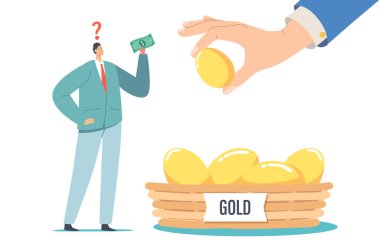
When the price of a good rises or falls, two separate effects are felt on the demand for the good.
The Substitution Effect
This is normally the dominant effect. As the price rises, and the good becomes relatively more expensive, consumers substitute into buying cheaper goods and thus demand for the more expensive good falls. This is always negative – a rise in price causes a contraction in demand, and a fall in price causes an extension in demand.
The Real Income Effect [1]
This effect is called the real income effect because the change in price affects the level of real income of the consumer, and thus affects the demand for the good.
Remember that real income is the quantity of goods a consumer can buy with the money income the have. Real Income is calculated as
As the price of the good in question rises, so does the average of all prices, cet. par. As a result the consumer will experience a reduction in real income.
Normal Goods
For Normal Goods [2] , a reduction in real income will result in a reduction in demand for the good. Therefore, for normal goods, the income effect is positive – reduced income results in a decrease in demand and, higher real income results in an increase in demand.
Inferior Goods
Price
Quantity
D1
D2
Q2
Q1
P
Price
Quantity
D2
D1
Q1
Q2
P
The Income Effect in an Inferior Good
The Income Effect in a Normal GoodFor Inferior Goods [3] , a reduction in real income will result in an increase in demand for the good. Therefore, for inferior goods, the income effect is negative – reduced income results in an increase in demand and, higher real income results in a decrease in demand.
The diagrams, above, show the real income effect on two different types of good.
Note that I have still plotted both these diagrams against price, therefore, they both still have the usual downward-sloping demand curve. The income change takes place in the background.
For most goods and consumers, the real income effect is very small – it is negligible [4] . This is because a single good is only one of many hundreds, possibly thousands, of goods which a consumer will buy and therefore a change in its price, alone, will have a negligible effect on the average price of all goods. Therefore the income effect can be assumed to be zero for most goods and consumers.
Giffen Goods
However, there are cetain circumstances where this assumption is invalid. If the good accounts for a large part of their budget, then a change in its price will have a significant effect on the average price of goods bought by that consumer. A rise in its price will result in a significant [5] fall in the level of real income.
If the good is normal, this will simply strengthen and reinforce the substitution effect, causing demand to fall even more. If, however, the good is inferior, the fall in income works to increase demand, counteracting the substitution effect. The net effect on demand will be the result of the two forces. If the substitution effect is stronger than the income effect then demand will fall as a result of the price rise. If the income effect is the stronger then demand will rise when the price rises.
Price
Quantity
D1
D2
Q2
Q1
P2
P1
QN
PN
S2
S1
Dapparent
The diagram, above shows this effect, first identified by Prof. Giffen.
Supply decreases from S1 to S2 causing a rise in the price and a consequent contraction in demand (the pure substitution effect) from Q1 to QN. However, the rise in price causes a sharp fall in the consumer’s income and, because these goods are inferior, an increase in demand from D1 to D2.This raises the quantity demanded to Q2. Thus the rise in price has caused the overall level of demand to rise. The demand curve appears to be the upward sloping curve, Dapparent. This type of good is known as a Giffen good. Giffen goods are always inferior, basic, staple foodstuffs which account for a large fraction of poor consumers’ spending.
In the diagram, above, if the consumer could be compensated for the loss of real income by increasing their money income sufficiently to restore the level of real income (in other words eliminating the income effect), the demand curve would shift back from D2 to D1 and the new equilibrium would be PNQN – the pure substitution effect equilibrium [6] .
Income
Quantity
Y2
Q1
Q2
The Income Demand Curve for a Normal Good
Income
Quantity
D
Q2
Q1
Y1
The Income Demand Curve for an Inferior Good
Y2
Y1
DIncome Demand Curves
In the 2 diagrams, below, we see the demand curves for both Inferior goods and Normal goods plotted against Income rather than Price.









